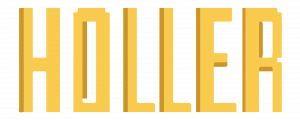-
Amber Stewart posted
As we are creating our books, my students have asked me a few questions that I just wanted some clarification on:
1. Should students draw on the front and back of the page?
2. If they would like to use markers, can they?
3. Can they cut the pages to make a smaller book?
4. If they are doing a chapter book, is it okay to do half of the writing on one side of the page and the other half on the other side divided by a line?
5. If we need to purchase more paper, what kind do I need to purchase so it will be the same?I know these seem like common sense, but I didn’t really know how to answer so they stay on the same page.
1 Comment

Hi Amber. Thanks for the questions. I will try to help here, and also go over these questions tomorrow from Breathitt County High School during our LYNC session as well. We are going to be covering how to prep the book for us to bind them during our session, so a lot of the technical questions will be covered as we go.
1. Some mediums make it so that drawing on the front and back of a page gets a little messy. Like Markers. The color ‘bleeds’ thru onto the back of the page. One of the things I will be covering a little later is prepping the pages for binding. If a students is using markers, or watercolor, or something that ‘bleeds’ a lot, then you wouldn’t want to place artwork on the front and the back of one page. Use separate pages, then once the artwork is finished, we will then copy the pages using the copier in the school office. All this will be covered tomorrow and during the session after that though, so please don’t feel overwhelmed.
2. Marker are fine to use, but by doing so it almost guarantees that the student is going to have to tag on that additional step at the end of copying their artwork using the copying machine, and making copies that are ‘back to back’, or double sided.
3. Cutting the pages to make a smaller book is fine, but I will caution on using very careful craftsmanship while doing so. Make sure that the pages are all cut evenly. We have the capability of trimming the binding down to fit almost any size book.
4. Chapter books can be divided in all sorts of ways. The way your student questioned about it perfectly fine. I provided only a few examples as to how to set up the layout for a chapter book, but highly recommend that students go and do a little research into the hundreds of ways that a chapter book can be sorted. There’s an infinite possibility as to how to do that, and the method you described is just fine.
5. The type of paper we are using is 70lb cardstock. Should you need more paper, please let your KVEC representative know ok!! We will provide more paper to you so that you don’t have to try and match that up!! Kelli Thompson can also help you with that too, so please let her know. Although I picked out the paper we are going to use, I didn’t order the supplies. Wish I could go ahead and get those to you now, but Kelli is great. She will help you get more paper just please let her, or your KVEC rep. for your region, know ok!!
These aren’t common sense questions really… they are very specific, and help so much. Knowing what questions are out there helps me in preparing for content each week. I wish more teachers were asking questions! But this is a new and innovative way of conducting programs. We will get better with this as we go along.
Thanks again Amber.